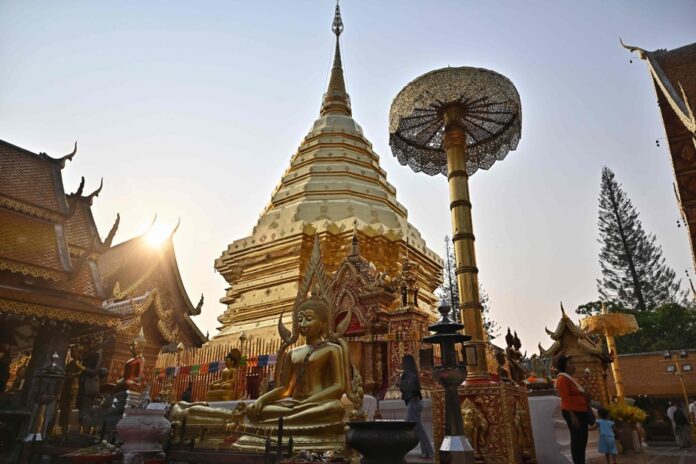(Chiang Mai) In Chiang Mai, which has become one of the most polluted cities in the world, residents live under a foul cloud that threatens their health and tourism on the eve of the Thai New Year.
Classic in this season, the smoke released by forest fires and the burning of stubble by farmers has reached unprecedented levels this year and is suffocating the major tourist city in northern Thailand.
On Wednesday, as for several days in a row, Chiang Mai was at the top of the cities in the world with the most polluted air with fine particles in the ranking established by the IQAir application.
Photos and videos of the haze that blanketed the historic city have sparked calls for action ahead of the highly anticipated national elections in May and the World Health Organization has warned of dire long-term consequences term of air pollution.
Local readings showed levels of PM2.5 particles – so tiny they can enter the bloodstream – more than 30 times the annual WHO recommendation, according to IQAir.
“It made me want to cry,” Kanchaya Boontan, the owner of a small travel agency, told AFP.
“This year is bad, normally the pollution is not too long, but foreigners have seen the news,” she said, adjusting her N95 mask, equivalent to an FFP2.
“Last week, I only had one client. This week, no one. »
Shunned by foreigners, Chiang Mai is also shunned by Thais, who have multiplied cancellations as the weekend of Songkran, the local New Year, approaches due to pollution, according to the hotel association of Thailand.
Outside the famous Tha Phae gate, as tourists scare away pigeons and pose for photos, Aun, a 45-year-old orange juice seller, tries to keep the business going.
“Pollution affects my life more and more every day, whether it’s my health or the drop in tourist numbers,” he explains.
“Some days you can barely see the roads in front of you, and it’s not fog, it’s smog,” he adds.
According to Siwatt Pongpiachan, an atmospheric scientist at the National Astronomical Research Institute of Thailand, the pollution is mainly due to burning by farmers in the region and in neighboring countries.
PM2.5 particles, the most dangerous, accumulate at the city level, which is in a basin. According to the expert, the evolution of the climate is also in question.
According to the Ministry of Public Health, nearly two million people have had to be hospitalized this year for respiratory conditions caused by air pollution.
According to Rungsrit Kanjanavanit, a cardiologist in Chiang Mai, the authorities maintain a guilty silence, for fear of scaring off tourists for good, in a country where this sector is vital for the economy.
“The effects on the population are immense,” especially on children and the elderly, Rungsrit says, adding that long-term exposure to PM2.5 has established consequences on life expectancy.
“The sun was really bright red from the smoke in the sky, it was quite, quite strange and very hazy,” said British tourist Lucy Cooper.
“You couldn’t see beyond a few fields,” says the 34-year-old woman, who came with her partner and two children.
The smog “hides the beauty of the city”, laments Chokchai Mongkolcho, a Thai tourist.
“I wonder if I will ever come back here if the pollution persists. »








